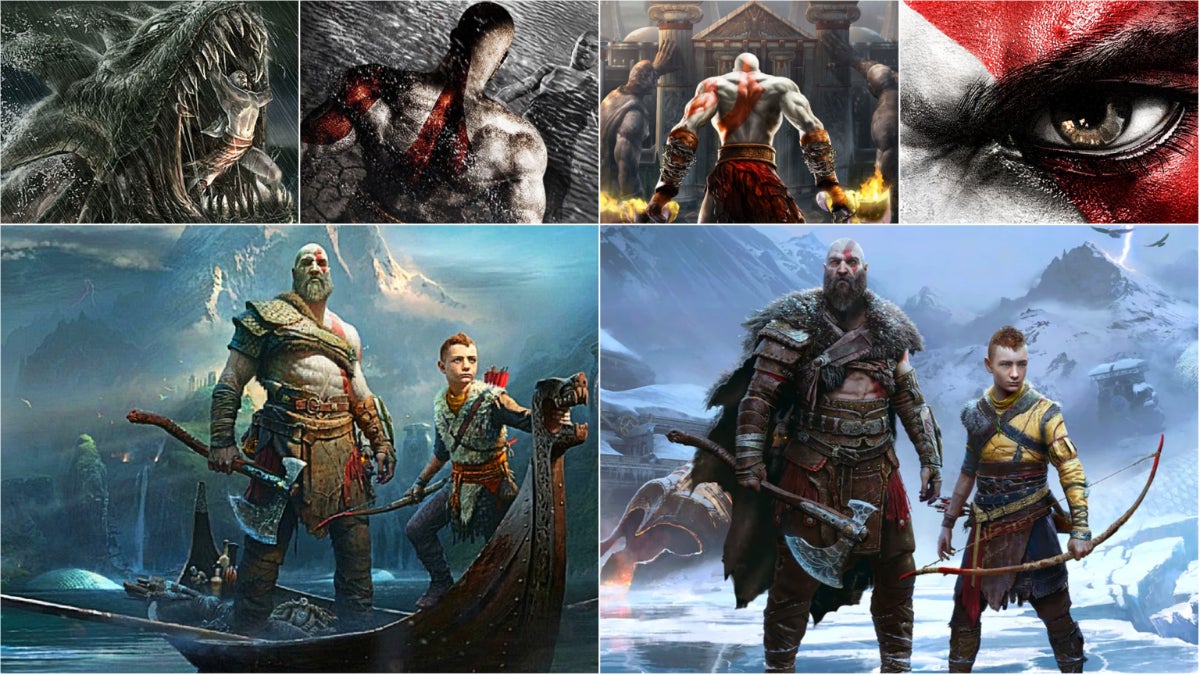![]() Key Takeaway
Key Takeaway
As of the time this article has been published, there are nine games in the God of War franchise. Here’s the chronological story order of every title:
- God of War: Ascension (released in 2013)
- God of War: Chains of Olympus (released in 2008)
- God of War (released in 2005)
- God of War: Ghost of Sparta (released in 2010)
- God of War: Betrayal (released in 2007)
- God of War II (released in 2007)
- God of War III (released in 2010)
- God of War (released in 2018)
- God of War Ragnarök (released in 2022)
The God of War timeline of story events takes place in a different order than the game releases. Even the most hardcore fans can lose track of when certain things happen. Here’s how Kratos’ life has been unfolding.
Table Of Contents
God of War: Ascension
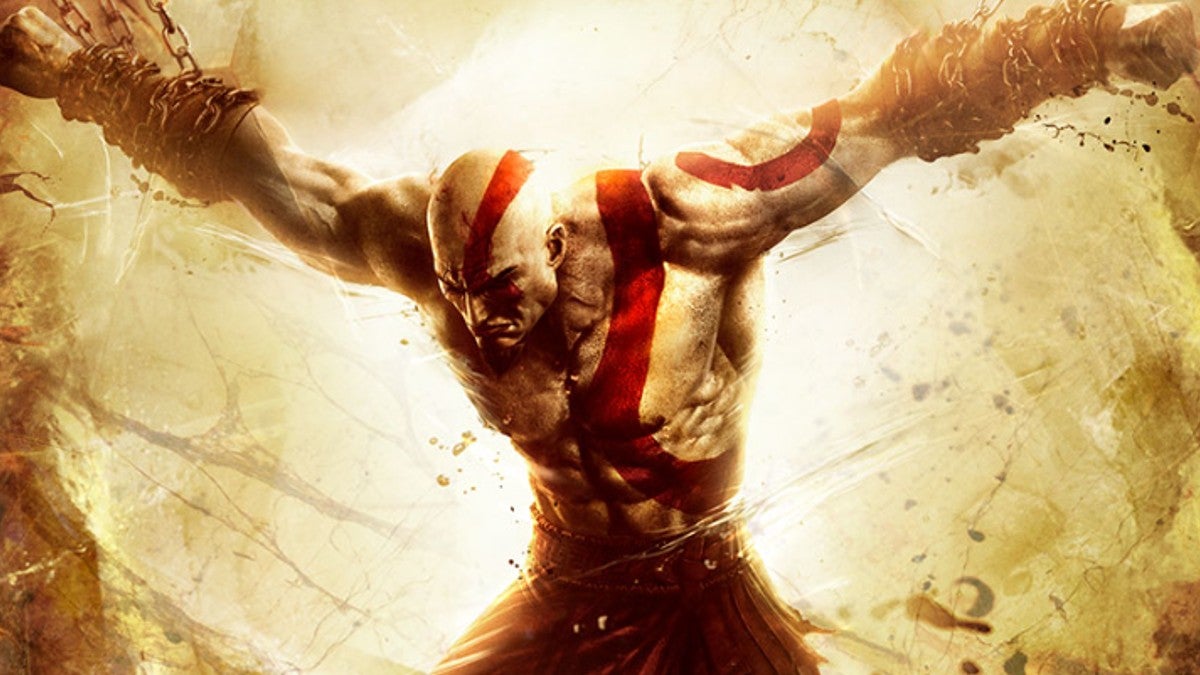
Before Kratos began his quest to slay Ares, he was plagued by the Furies and temporarily imprisoned by them. The events of this game revolve around Kratos freeing himself from his imprisonment and fighting the Furies.
Release Information
God of War: Ascension was initially released in North America on March 12, 2013. It was later released in most of Europe on March 13, 2013, then in Australia on March 14, 2013, next in the UK on March 15, 2013, and finally in Japan on October 31, 2013.
The only platform that this title was released on is the PlayStation 3.
The Birth of the Furies
This game begins with a prologue showing the war between the Primordials, who were almost incomprehensibly large beings. During this ancient war, the Furies were created, who then became the guardians of honor and punishers of oath-breakers.
In retribution for breaking an oath to Zeus, the Furies punished Aegaeon (one of the Hecatonchires) by turning his body into a stone prison. His now immobile body would then become a jail for all of the most hated oath-breakers.
Ironically, ages later, the Furies began plotting with Ares to overthrow Olympus. This led to Ares and the queen of the Furies, Alecto, mating and giving birth to Orkos. Orkos was supposed to be the perfect warrior and the one to lead the charge against Olympus. However, Ares deemed him too weak, and Orkos then became an oath-keeper.
Ares’ Plot
Many years later, Kratos caught Ares’ attention due to his prowess in battle. Ares made a blood oath with Kratos, but then tricked him into killing his wife Lysandra and his daughter Calliope.
Ares did this so that Kratos would become the ultimate killing machine who was unbound by emotional bonds. However, after the death of his wife and child, a depressed Kratos became a recluse and vowed never to serve Ares again. Ares became angry at this, which led the Furies to begin plaguing Kratos with countless visions of his dead wife and daughter.
Kratos’ Imprisonment
Orkos, who saw injustice in how Kratos was being tormented, told the Spartan that he could find a way to free himself of Ares by seeking out the oracle Aletheia. After seeking out the oracle, Kratos learns that the only way to be truly free was to kill the Furies.
Later on in his quest, the Furies confront Kratos and a battle ensues between the two parties. In the process, Kratos cuts off the arm of the Fury Megaera, but the Spartan loses the fight in the end. He gets imprisoned within Aegaeon and is tortured by the Furies.
While torturing Kratos, Megaera accidentally breaks his bonds. This leads to Kratos rampaging through the prison and slaying all three Furies. Afterward, Kratos goes home but is met by Orkos. Orkos tells Kratos that the only way to be free from their immortal bonds is to kill Orkos.
Although he does not want to kill his ally, Kratos eventually heeds Orkos’ advice and slays the oath-keeper at the latter’s request. This does the trick, however, Kratos then begins having unending nightmares about his dead family, which were apparently being suppressed by the immortal bond.
The game ends with Kratos burning down his home, and cremating Orkos’ body in the process, before setting out to find a way to rid himself of these new nightmares. This sets the stage for the next part in the God of War timeline.
God of War: Chains of Olympus
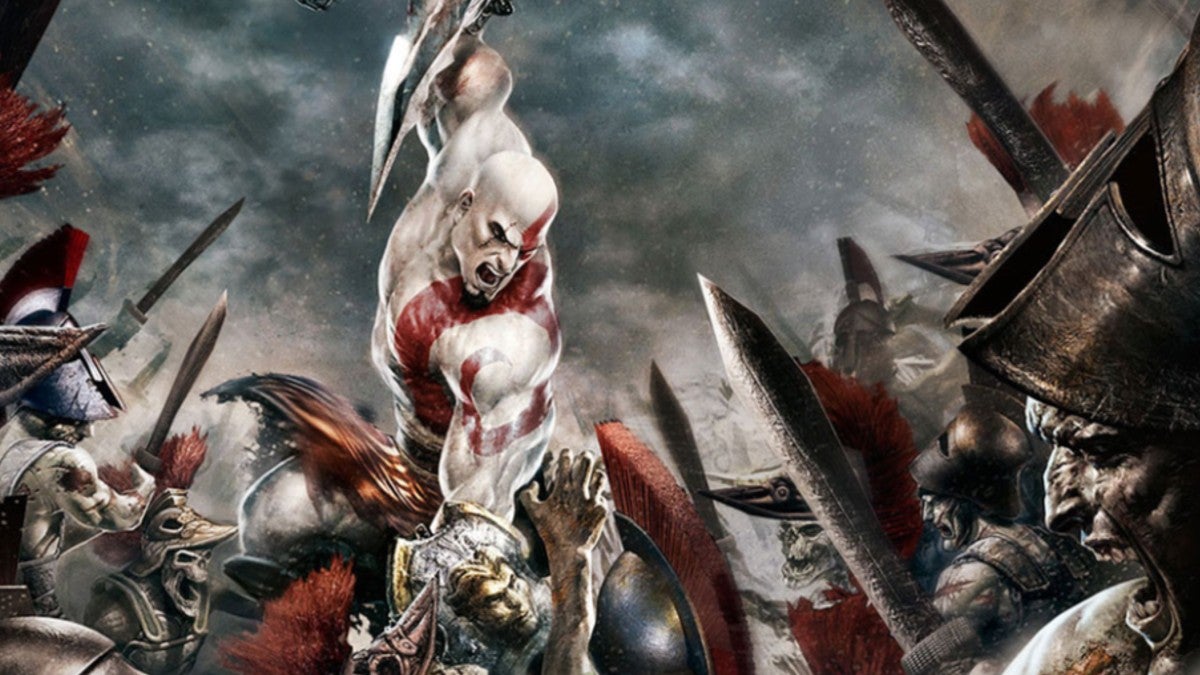
On his quest to rid himself of his nightmares, Kratos serves the gods of Olympus. He does many jobs for them, however, he is eventually left for dead when the gods are seemingly done using him.
Release Information
God of War: Chains of Olympus was initially released in North America on March 4, 2008. It was then released in Australia on March 27, 2008, next in Europe on March 28, 2008, and lastly in Japan on July 10, 2008.
The only platform that this title was released on is the PlayStation Portable.
Seeking the Fallen Sun
The game begins about halfway through Kratos’ 10-year servitude to Olympus during the God of War timeline. Kratos is tasked with defending Attica against a Persian invasion. During the battle, Kratos kills the Persian King. Though, Kratos then notices the sun fall from the sky and he sets out to investigate what has happened.
Kratos makes his way to the last place of remaining light: the Temple of Helios. Here, the Spartan learns that the titan Atlas has abducted Helios. Also, Morpheus has taken this opportunity to release a sleeping miasma across the world in order to seize control of it for himself. This puts most of the gods to sleep.
Afterward, Kratos ventures into the underworld to seek out Helios in an attempt to rescue him at the request of the gods. Kratos meets Charon, the ferryman of the underworld, who does not let the Spartan warrior pass. A fight breaks out, which leads to Charon tossing Kratos into Tartarus.
Kratos eventually makes his way back up to Charon, but not before seeing Atlas traversing the underworld. When Kratos finds Charon again, the Spartan takes the ferryman’s boat and follows the light of Helios, which is currently lighting up the underworld.
Kratos Finds the True Culprit
This leads Kratos to the Temple of Persephone. When there, Persephone tricks Kratos into relinquishing all of his powers to become a normal human once more so that he can join his daughter in the afterlife. Persephone then reveals that it was her plan to get Atlas to abduct Helios. She makes it clear that she intends to destroy the world by getting Atlas to break the foundations of the planet.
Eventually, Kratos realizes that he cannot let this happen. He regains his powers by killing many souls in the afterlife and once more becomes the Ghost of Sparta. Kratos then chases Persephone and they fight, which leads to Persephone’s death at Kratos’ hands.
Kratos also subdues Atlas, but, in the struggle, the pillar holding up the world breaks. This leads to Atlas carrying the world on his back for all eternity. Afterward, Kratos rescues Helios, and the sun god ascends to the sky in his chariot.
Exhausted from the recent events, Kratos falls out of the chariot and the gods bring him to the cliffs above the Aegean Sea. Olympus then abandons Kratos, refusing to free him from his nightmares. The next part of the God of War timeline picks up in the first game in the franchise.
God of War
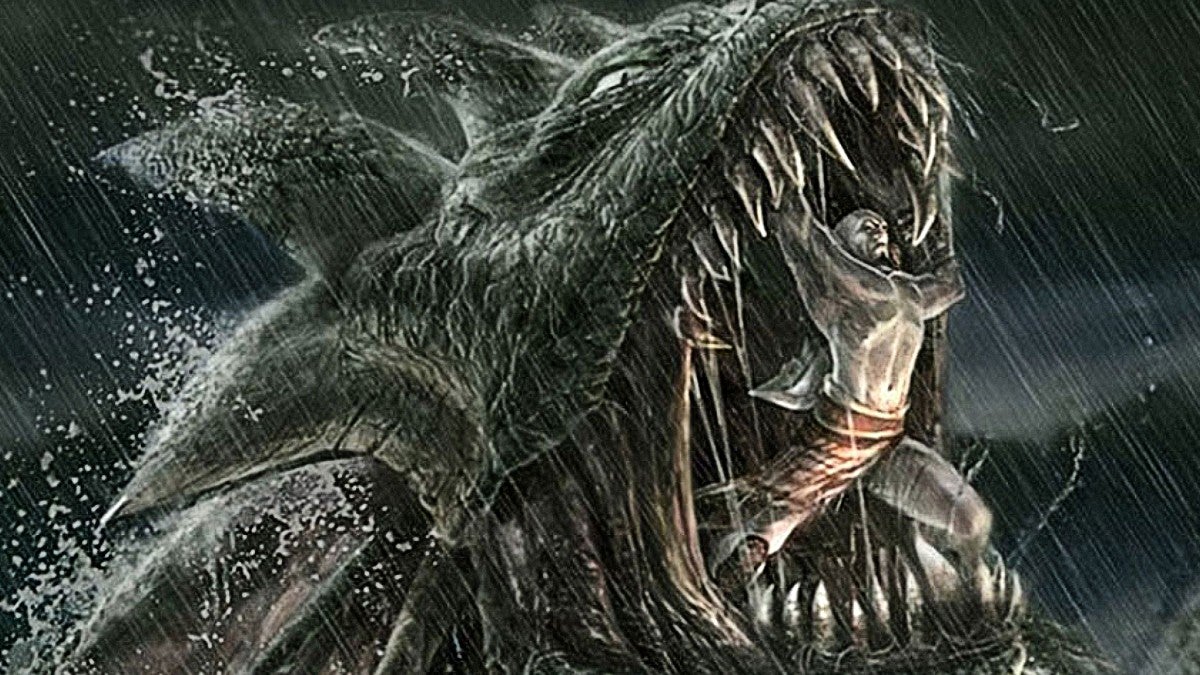
This is the first game in the series where Kratos makes his initial appearance in the gaming world. Renowned for its incredible gameplay and memorable characters, the original God of War not only became a classic but was popular enough to spawn a whole franchise.
Release Information
God of War was initially released on the PlayStation 2 in North America on March 22, 2005. It was then released for the same console in Europe on July 8, 2005, and finally in Japan on November 17, 2005.
This game was then re-released as part of the God of War Collection on the PlayStation 3. This console collection was released in North America on November 17, 2009, in Japan on March 18, 2010, and then in Australia on April 29, 2010.
However, God of War also later appeared on the PlayStation Vita. It arrived on this handheld console in North America on May 6, 2014, in Europe on May 9, 2014, in Australia on May 14, 2014, and lastly in Japan on May 15, 2014.
Birth of the Ghost of Sparta
The game opens with flashbacks of Kratos’ ordeal against a barbarian horde, which pulls the player into the past part of the God of War timeline. The Spartan’s forces were on the brink of destruction, so Kratos prayed to Ares for aid—which the god answered because he saw Kratos’ great potential. At this time, Ares also fused the Blades of Chaos to Kratos’ arms as both a gift and a curse.
Following this bond, Kratos served Ares and raged wars all across Greece. One day, Kratos and his forces laid siege to a village that worshipped Athena. As usual, the Spartan destroyed everything in his path while possessed by a blinding blood lust. However, after the red haze had cleared, Kratos realized that he had killed his wife and daughter in the process.
This was a test by Ares so that Kratos could become the ultimate killing machine—one unbound by emotional ties. The oracle of this city cursed Kratos for his deeds and bound the ashes of his dead family to his flesh, which gave him a pale appearance. It was at this point that Kratos gained his infamous title as the Ghost of Sparta.
Seeking Revenge and Redemption
Kratos denounced Ares after learning that the god had tricked him into killing his family. The Ghost of Sparta then began serving the other gods of Olympus. During this time, Kratos was approached by Athena, who asked him to protect her city against Ares’ forces. Kratos agrees only after asking the gods to rid him of his unending nightmares and for a chance to redeem himself.
Kratos clears a bloody path to the Temple of Athena, where he meets an oracle. The oracle tells the Spartan that the only way for a mortal to kill a god is with the power that lies within Pandora’s Box. However, Pandora’s Box is locked away in Pandora’s Temple, which is located on the back of the Titan Cronos.
The Opening of Pandora’s Box
Kratos makes his way to the Titan Cronos and climbs the temple upon his back. After much hardship, Kratos finally finds Pandora’s Box. Although, before he can open it, Ares senses the impeding danger and impales Kratos with a spear.
The god then tosses Kratos into the underworld, which is not canonically the first time that Kratos enters the underworld in the God of War timeline. However, with the help of a mysterious gravedigger (who later turns out to be Zeus), Kratos makes it back to the living world. Kratos is then able to open Pandora’s Box and gains the power to kill a god.
Following this, Kratos and Ares engage in battle. Ares strips Kratos of the Blade of Chaos, but the Spartan cleverly picks up a giant ornamental sword and uses it to kill Ares. Although the other gods are happy about his deeds, they do not relieve Kratos of his horrid nightmares.
The game ends with Kratos throwing himself from the cliffs atop the Aegean Sea, though Athena saves him. The goddess then leads Kratos to Olympus, where he becomes the new god of war.
God of War: Ghost of Sparta
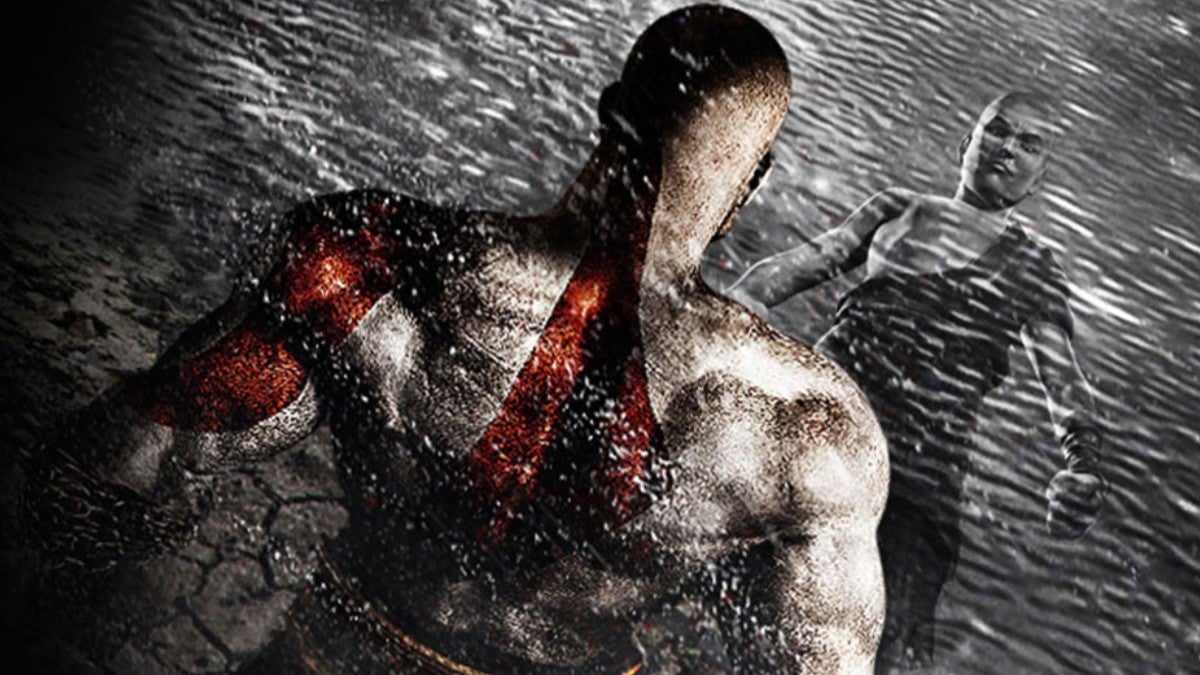
Set between the original God of War and God of War II, this adventure involves Kratos visiting the lost city of Atlantis. Here, he learns about his mother and his brother Deimos.
Release Information
God of War: Ghost of Sparta was initially released in North America on November 2, 2010. It was then released in Europe on November 3, 2010, next in Australia on November 4, 2010, followed in the UK on November 5, 2010, and lastly in Japan on November 11, 2010.
The only platform that this title was released on is the PlayStation Portable.
Deimos’ Abduction
In the beginning, in an older part of the God of War timeline, it is revealed that Kratos used to live and train with his brother Deimos. Due to a prophecy that foretold of a marked warrior destroying Olympus, Ares and Zeus decide to kidnap Deimos because they believe he is the marked warrior in the prophecy thanks to Deimos’ birthmarks.
As Deimos is being abducted by Ares, Kratos attacks and tries to save his brother. However, Ares easily and violently repels the young Kratos’ attack, which leaves the Spartan boy with the trademark scar over his right eye. Ares then takes Deimos to the Domain of Death, where he is imprisoned and tortured by Thanatos, the god of death.
Adventure to Atlantis
Time skips forward to the present day when Kratos has already ascended the throne as the new god of war—although he is technically only a demi-god at this point. Restless about his past, Kratos sets out to visit Poseidon’s Temple in Atlantis to seek answers. Although Poseidon sends enemies after Kratos to stop him, the god of war reaches Atlantis and finds his mother, Callisto.
Kratos speaks to his mother, who tells him about Deimos’ imprisonment in the Domain of Death. Sadly, before she can tell him more, the gods transform Callisto into a beast that Kratos has to kill to protect himself. Afterward, Kratos then travels to Sparta to seek more answers, and, in the process, releases the titan Thera who floods and destroys Atlantis.
Revelations in Sparta and the Return to Atlantis
Kratos battles through numerous powerful foes in Sparta and reaches the Temple of Ares. When there, the god of war finds a reflection of his younger self, who tells him that the path forward is back in Atlantis. Kratos sets sail for Atlantis, and, after more destruction and death, the Spartan warrior finds the Domain of Death in Atlantis’ ruins.
Kratos finds Deimos and frees him. Though, enraged by how long it took Kratos to rescue him, Deimos attacks. Thanatos intervenes and brings them all to the cliffs atop the Aegean Sea. Here, Deimos almost falls from the bluffs but is saved by Kratos. Finally, Deimos lets go of his anger and forgives Kratos. Together, they battle Thanatos.
Deimos’ Death
During the conflict, Thanatos reveals that Kratos was the prophesized marked warrior; not Deimos. Then, Thanatos kills Deimos, however, Kratos returns the favor and slays the god of death. After the battle, Kratos brings his dead brother’s body up the nearby mountain. Here, he meets the mysterious gravedigger once more, who helps him bury Deimos’ body.
After the funeral, Athena appears before Kratos and attempts to raise him to full godhood now that the Spartan’s bonds to the mortal world are completely gone. The bonds, in this case, refer to Kratos having mortal family members.
Kratos refuses but makes his way back to his throne at Olympus. He sits upon it and dwells on his desire for revenge against the gods. It is not explained how, but Kratos apparently still ascends to full godhood even after declining the offer from Athena. It is implied in God of War II that she made him a full god without his permission or knowledge.
God of War: Betrayal
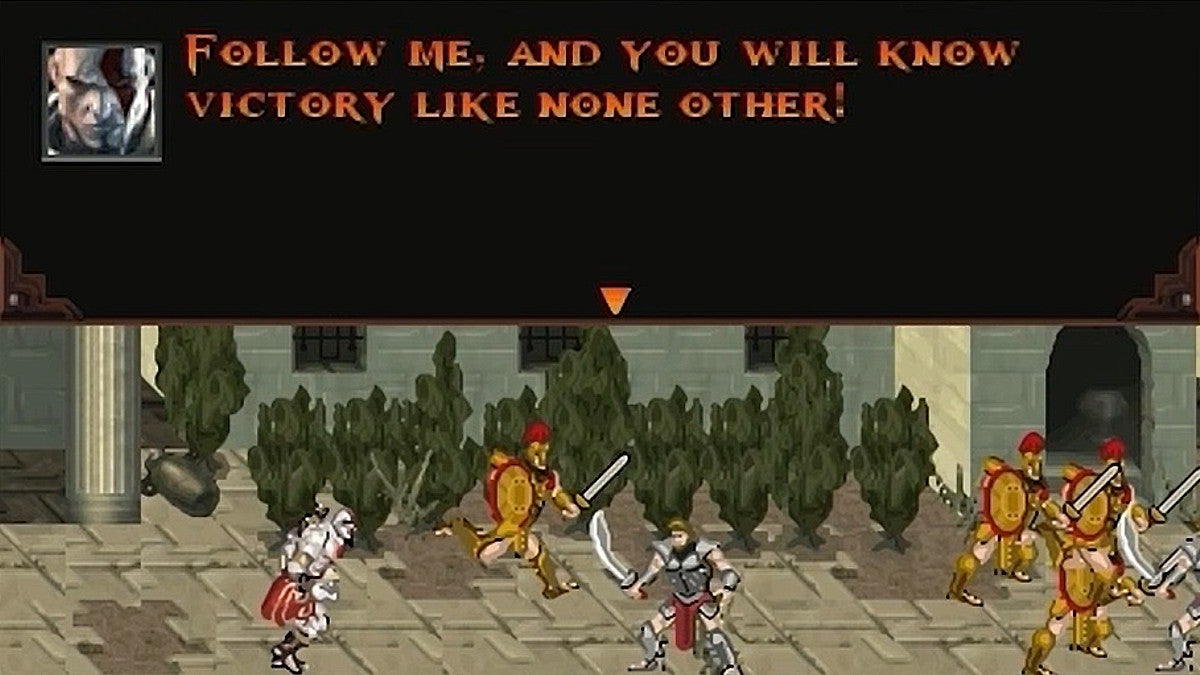
Although a far cry from other games in the franchise, this part of Kratos’ life is canon according to Santa Monica Studios’ animation director, Bruno Velazquez. Velazquez stated this in a tweet made on November 7, 2020.
Release Information
God of War: Betrayal was released internationally on June 20, 2007, for all mobile devices that support the Java Platform, Micro Edition (Java ME). This is the only time that a game in the God of War timeline appears only on mobile devices. It is also the only title to not be a PlayStation exclusive.
A Rampage Through Greece
This is by far the shortest out of all the games in the God of War timeline. Throughout this side-scrolling adventure, Kratos rages wars across Greece. However, his efforts are being slowed by a mysterious assassin. Most of the game involves Kratos pursuing this assassin while battling other foes.
In the end, Zeus sends Hermes’ son, Ceryx, to Kratos with a message. Ceryx then convey’s Zeus’ concern about the destruction Kratos is causing. However, Kratos does not listen and eventually kills Ceryx. Although the Spartan and his soldiers celebrate, Kratos realizes that Olympus will not take kindly to Ceryx’s death.
God of War II
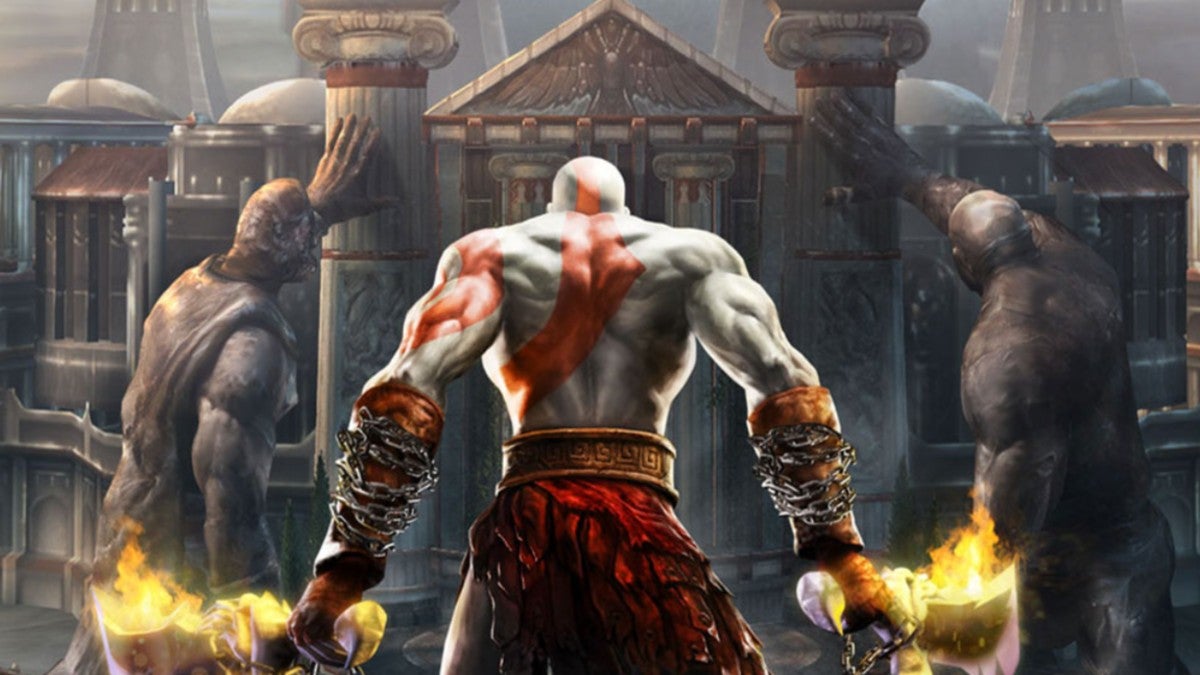
This part of the God of War timeline is when Kratos begins his full assault on Olympus. He turns his back on all of the gods and starts to systematically destroy everything they’ve built. In the process, Kratos allies with the titans.
Release Information
God of War II was initially released on the PlayStation 2 in North America on March 13, 2007. It was then released for the same console in Europe on April 27, 2007, then in Australia on May 3, 2007, and finally in Japan on October 25, 2007.
This game was then re-released as part of the God of War Collection on the PlayStation 3. This console collection was released in North America on November 17, 2009, in Japan on March 18, 2010, and then in Australia on April 29, 2010.
However, God of War II also later appeared on the PlayStation Vita at the same time as God of War. It arrived on this handheld console in North America on May 6, 2014, in Europe on May 9, 2014, in Australia on May 14, 2014, and lastly in Japan on May 15, 2014.
The Battle of Rhodes
In another war birthed from Kratos’ unending rage, the new god of war and his Spartan followers descend upon the city of Rhodes to conquer it. Athena briefly shows up to try and convince Kratos to stop his warpath, however, the Ghost of Sparta refuses. He turns his back on her and all the other gods in favor of his anger-fueled domination of Greece.
Shortly after Kratos joins his forces on the battlefield, some of his godly might is stolen by an eagle, who then inserts the power into the colossus of Rhodes. The massive metal statue comes alive and attacks the weakened Kratos. Suspiciously, Zeus appears and offers Kratos the Blade of Olympus so that he can channel his remaining godly powers into it to slay the colossus.
Out of desperation, Kratos accepts the offer. With the blade coursing with godly might, Kratos is able to defeat the colossus, however, he is gravely wounded by a falling hand of the statue. The Ghost of Sparta tries to make his way to the Blade of Olympus to reclaim his full power but Zeus intervenes.
The king of the gods picks up the Blade of Olympus and stabs Kratos in the chest with it. It turns out that Zeus was the eagle who stole Kratos’ powers and caused the colossus to come to life.
By tricking Kratos into putting the rest of his godhood into the Blade of Olympus, Zeus was able to weaken Kratos enough to land a lethal wound upon the—now-former—god. Zeus also kills all remaining soldiers on the battlefield—Spartan and non-Spartan alike.
The Island of Creation
The mortal Kratos gets sent to the underworld yet again. However, like all previous times, he escapes—this time with the help of the titan Gaia. Gaia then gives Kratos Pegasus to help him travel and tells the warrior what he needs to do next. Gaia advises Kratos to seek out the Sisters of Fate so that he can rewrite history and kill Zeus before the moment of betrayal.
Kratos heeds the titan’s advice and begins his quest by heading to the Island of Creation. On the way, the island’s griffin-riding defenders attack Kratos and Pegasus. Sadly, Pegasus perishes in the conflict, but Kratos manages to defeat the defenders and land on the island.
While Kratos is exploring the island, Gaia tells him about Zeus’ history and how he rose to become the king of the gods by defeating the titans. From this, Kratos learns that Gaia wants revenge for how Zeus imprisoned most of the titans. During Kratos’ travels on the Island of Creation, he meets and kills many power foes and takes their powers.
Confronting the Sister of Fate
After taking down many strong enemies, Kratos descends under the Island of Creation. Here, he meets Atlas for the first time since the events of God of War: Chains of Olympus. However, this time, they are on the same side. After some discussion, Atlas agrees to help Kratos since all titans wish to kill Zeus out of revenge.
Atlas raises Kratos back to the surface, where, among other feats, the Spartan warrior gains a phoenix as a mount. With his new flying ally, Kratos soars up to the Temple of the Fates, where the Sisters reside.
Kratos finds the Fates and tells them his wishes. The Sisters deny him passage into their domain but this does not stop the ever-determined Kratos. This leads to Kratos fighting both Lahkesis and Atropos, during which they all enter a magical mirror. After a lot of fighting, Kratos manages to shatter the mirror and trap the two younger Sisters of Fate.
Afterward, Kratos finds and kills the last Sister—Clotho—and takes control of the Loom of Fate. Kratos rewrites history by sending himself back in time to the battle of Rhodes right before Zeus betrays him.
Battle With Zeus
Kratos manages to take the Blade of Olympus from Zeus just in time and the god of war regains his full godhood. After a tough battle, Kratos eventually impales the king of the gods with the Blade of Olympus, returning the favor that began the events of this part of the God of War timeline.
However, before Kratos can kill Zeus, Athena interferes and saves the king of the gods. In the struggle, Athena throws herself in front of Kratos, who accidentally kills her with the Blade of Olympus. During this time, Zeus escapes while warning Kratos that he has started a war that he cannot win.
With her dying breath, Athena claims she protected Zeus so that the cycle of son-on-father violence can end. She goes on to explain that the titan Cronos killed his father, Uranus, and that Zeus imprisoned his father, Cronos. Finally, Athena tells Kratos that he is Zeus’ son and has always been a demigod prior to his defeat of Ares and ascending to full godhood.
Athena dies and leaves Kratos with the knowledge that all of the gods will try to stop him and protect Zeus. Kratos states that he won’t let anyone stop him from bringing all of Olympus down. After Athena passes away, Gaia reminds Kratos that he has control over the Loom of Fate.
Rewriting the Battle of the Gods and Titans
When Kratos returns to the Loom of Fate, he immediately goes back in time to the war between the gods and the titans. Here, he aids the titans by bringing many of them to the current time. Afterward, Kratos and Gaia lead the titans up the mountain upon which Olympus resides. This sets things up for the next part of the God of War timeline.
God of War III
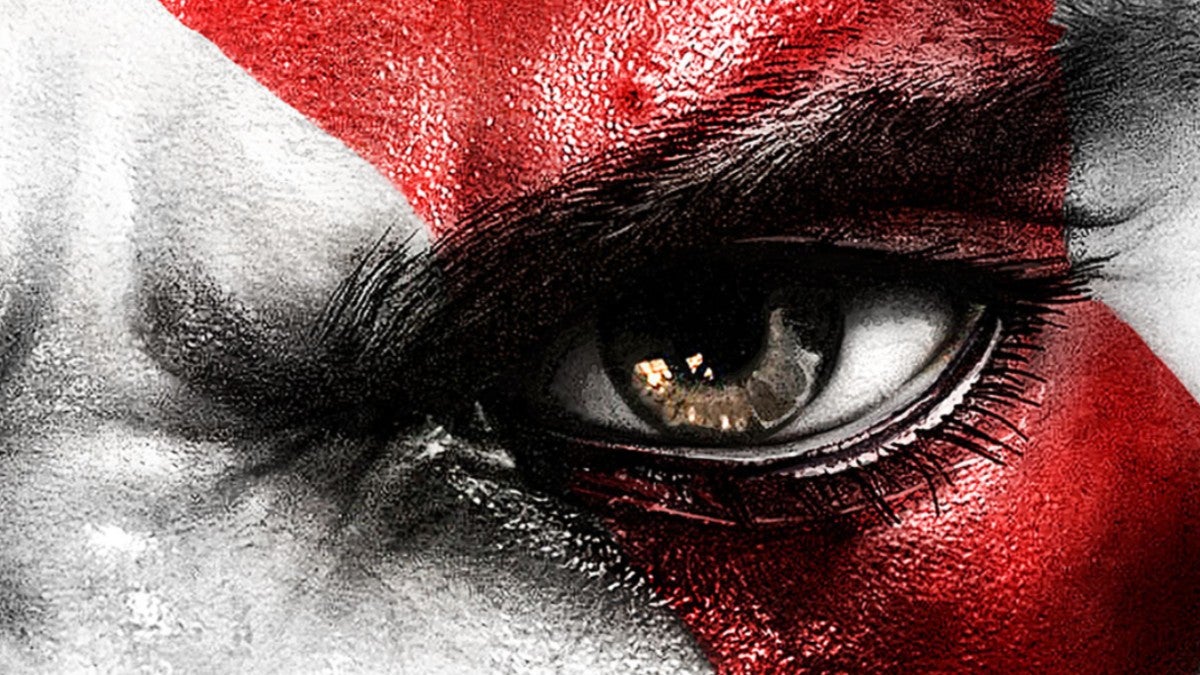
In the final chapter of the original trilogy—and chronologically the last game set in Greece—Kratos finally gets his revenge on Zeus and Olympus. The rogue god of war and the titans wage their war and are victorious. Afterward, it seemed like Kratos’ story finally ended…though it turned out that it was not the end of the story, but only the end of a chapter.
Release Information
God of War III was initially released on the PlayStation 3 in North America on March 16, 2010. It was then released for the same console in Australia on March 18, 2010, then in Europe on March 19, 2010, and lastly in Japan on March 25, 2010.
This game was then remastered and released again on the PlayStation 4. This remaster was released in North America on July 14, 2015, in Europe on July 15, 2015, and then in the UK on July 17, 2015.
Betrayed Again
The game picks up right where God of War II left off. The titans are scaling Mount Olympus and are doing battle with the gods. The first casualties occur on the titan’s side as Hades and Poseidon lay waste to the titan’s vanguard. However, Kratos faces Poseidon and brutally kills the god of the seas, which causes a massive flood to envelop most of Greece.
Afterward, Kratos and Gaia reach Zeus, who blasts them with a huge bolt of lightning. This sends both Kratos and Gaia tumbling down Mount Olympus. Gaia manages to hold on and resume her climb but Kratos does not.
In the final moments before his fall, Gaia reveals that Kratos was just a pawn to her. Now that the titans are at the gods’ doorstep, she claims to not need Kratos anymore and lets him plummet to his death.
Return to the Underworld
Not for the first time in the God of War timeline, Kratos ends up in the underworld. He contemplates his actions, though, after some thought, he decides that he still wants to get revenge on Zeus for all that has transpired. While in the underworld, Kratos meets the ghost of Athena, who has apparently somehow reformed herself into a new kind of existence.
This ethereal Athena agrees to help Kratos in his quest for revenge. She gives him new weapons and tells him that he needs to put out the Flame of Olympus if he wants to kill Zeus once and for all.
Afterward, Kratos makes his way to Hades’ lair and fights the god of the underworld. Kratos defeats Hades after a tough fight and rips out the god’s soul with the Claws of Hades, which Kratos now owns. Next, Kratos leaves the underworld through a portal, intent on slaying every god and titan between himself and Zeus.
Extinguishing the Flame of Olympus
Kratos goes on another trademark rampage, slaying every god, hero, monster, and titan who gets in his way. On his journey, he learns that he needs Pandora’s help to put out the Flame of Olympus. Eventually, Kratos and Pandora reach Olympus, but Zeus stops them before the duo can complete their task.
After a struggle, Pandora sacrifices herself to put out the Flame of Olympus, underneath which was Pandora’s Box. Kratos opens it to find the box empty, after which Zeus mocks him for failing.
It is not explained how or why Pandora’s Box was both within the Flame of Olympus and in the Temple of Pandora on Cronos’ back in the original God of War. However, it is implied that when Kratos brought the titans from the past to the present, this changed many things, including Cronos’ whereabouts and punishment. With that said, it is still canon that Kratos opened the box once before to kill Ares in a previous part of the God of War timeline.
The End of Olympus
After putting out the Flame of Olympus, Kratos, Zeus, and Gaia have a chaotic three-way fight. During the epic battle, Gaia dies as Kratos pins Zeus to her heart. Following this, Zeus tries to astral-project himself as a last-ditch effort to destroy Kratos’ mind with trickery.
However, with the memory of Pandora to aid him, Kratos overcomes the fear, hatred, and guilt within himself, which allows him to regain control of his mind. When he does, he shoves Zeus’ spirit back into his body, and then Kratos beats the king of the gods to death with his bare hands.
Afterward, the ghost of Athena appears before a victorious Kratos. She tells him that Pandora’s Box was not empty when he most recently opened it; it contained the power of Hope, which is how Kratos was able to break free from the negativity within himself and defeat Zeus.
Athena then demands that Kratos hand over the power of Hope, to which he refuses. Instead, Kratos uses the Blade of Olympus to impale himself, which causes the power of Hope to shoot into the sky. This, in turn, apparently bestows the power of Hope onto all of humanity.
Angered, Athena pulls the Blade of Olympus out of Kratos and then leaves. With one final snarl, Kratos tells her that he owes Athena nothing and then seemingly falls dead upon the ground.
However, after the credits, the spot where Kratos’ body was is now vacant except for a trail of blood leading to the edge of a cliff. This implies that Kratos lived through his own suicide once again. Later, this is confirmed as he appears alive and well in God of War (2018).
God of War (2018)
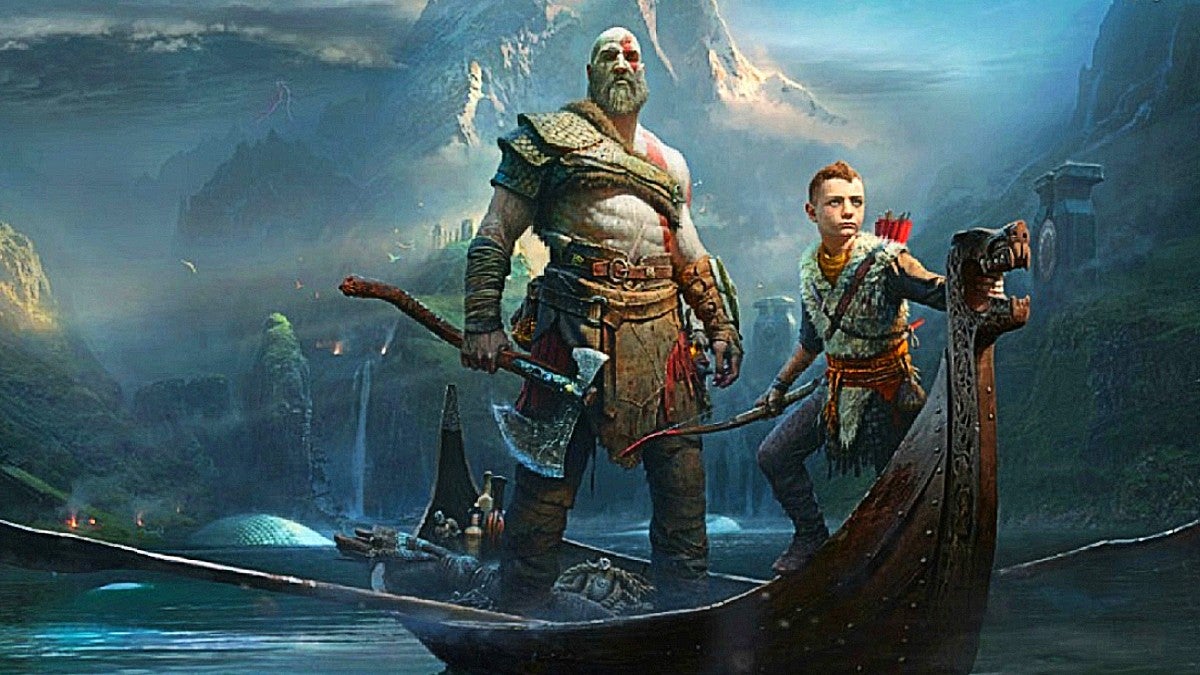
After Kratos disappears following the credits of God of War III, he shows up in Norway. This begins the new chapter of the God of War timeline. Now, Kratos explores the Norse world with his son, Atreus.
Release Information
God of War (2018) was internationally released on the PlayStation 4 on April 20, 2018. However, on January 14, 2022, it was ported to Windows.
Kratos’ New Family
This new chapter in Kratos’ life shows players what he has been up to since God of War III. Not only has Kratos gotten married, but he also had a child named Atreus with his wife Faye (Laufey).
The game opens with Kratos and Atreus cremating Faye’s body. It is never explicitly mentioned how Faye died, however, it seems that she passed away somewhat peacefully—likely either through natural causes, illness, or the long-lasting effects of old battle wounds. Faye’s last wish was to have her ashes spread at the highest peak in the Nine Realms.
As Kratos and Atreus begin their journey to the highest peak in Midgard, they encounter a god-like stranger who attacks them. Kratos fends off the attacker and seemingly kills him. The father and son duo then continue on their quest.
The Light of Alfheim
Throughout their journey, Kratos meets new allies, such as Brok and Sindri, Freya, Jörmungandr, as well as Mimir. As Kratos tries to make his way to the highest peak in Midgard, he finds his way blocked by black mist.
Freya tells him that he needs the Light of Alfheim to dissipate the black mist. She also grants them some Bifrost magic to open portals to other realms. Afterward, Kratos and Atreus explore Alfheim by going through a portal in Tyr’s Temple at the Lake of Nine.
Kratos adventures through Alfheim and eventually captures some of the special light. He and his son return to Midgard and clear away the black mist. This allows the duo to reach the highest peak in Midgard.
Meeting Mimir
After they climb to the summit, Kratos learns that the stranger who attacked them is still alive. Worse yet, he has minions—Magni and Modi—who are interrogating Mimir. When Magni and Modi leave, Kratos and Atreus talk to Mimir, who is bound to a tree.
At Mimir’s behest, Kratos beheads him and brings his head to Freya, who revives the severed head. Newly revived and freed from his bonds, Mimir happily leads Kratos and Atreus to the true highest peak in all the Nine Realms—which is in Jötunheim. Though, the way was long and full of trouble.
Atreus Learns He Is a Demigod
During their search for a passage to Jötunheim, Kratos is attacked by Magni and Modi. In the struggle, Kratos kills Magni, though a badly wounded Modi escapes. Afterward, Atreus falls sick due to believing that he is a regular mortal instead of a demigod. At Freya’s advice, Kratos heads to Helheim to get a cure for Atreus.
Kratos’ Leviathan Axe does not work on Helheim’s foes very well, so he reclaims the Blades of Chaos from his house’s basement. With the infernal weapons in hand, Kratos gets what he needs from Helheim and returns to Atreus and Freya. Freya is able to cure Atreus and Kratos tells his son the truth about his godhood.
When they continue their journey, the duo encounters a very weakened Modi. Atreus kills Modi in cold blood against Kratos’ wishes. This sets the tone for Thor’s vengeance in a later part of the God of War timeline, as Magni and Modi were his sons.
Not long afterward, the stranger who keeps attacking the duo returns, this time revealed to be the god Baldur, who is the son of Odin and Freya. A conflict ensues, which leads to Baldur destroying the way to Jötunheim and casting Kratos and Atreus into Helheim.
Baldur’s Death
Eventually, the father and son (accompanied by Mimir) get out of Helheim. Although, they are soon attacked by Baldur once more. Despite his invulnerability, it is revealed that he cannot feel the joy of life due to the same spell that protects him. Baldur greatly resents his mother Freya for putting this spell on him even though it keeps him from getting hurt.
During the climactic battle between Kratos and Baldur, Atreus shoots Baldur with an arrow tipped with Baldur’s one weakness: mistletoe. With his invulnerability now gone, Baldur is given the chance to give up, but he doesn’t. Instead, having gone mad, he attacks Freya and tries to kill her.
This forces Kratos to kill the vulnerable Baldur to save Freya. Despite being saved, Freya hates that Kratos has killed her son, so she leaves with Baldur’s body and vows vengeance upon Kratos.
After the fight, Kratos tells Atreus all about his past in Greece, and how Kratos killed the other Greek gods. Kratos goes on to say that they should not repeat the mistakes of the past by killing more gods unnecessarily.
Reaching Jötunheim
Kratos and Atreus finally reach Jötunheim by following more of Mimir’s guidance. They spread Faye’s ashes on the highest peak and they learn a great deal about her. It turns out that she was a frost giant (a Jötunn) and that most of Kratos’ recent adventures were prophesized by the frost giants.
Kratos and Atreus also learn that Baldur was after Faye the whole time and that Atreus was supposed to be named Loki, as is stated in the prophecy they discover. After the revelations, Kratos, Atreus, and Mimir return to Kratos and Atreus’ home.
When they reach Midgard, it turns out that Fimbulwinter has started, which heralds the coming of Ragnarök. Mimir states that it happened early. The game ends with Atreus having a vision of Thor appearing on their doorstep at the end of Fimbulwinter. This hint sets things up for the next part of the God of War timeline.
God of War Ragnarök
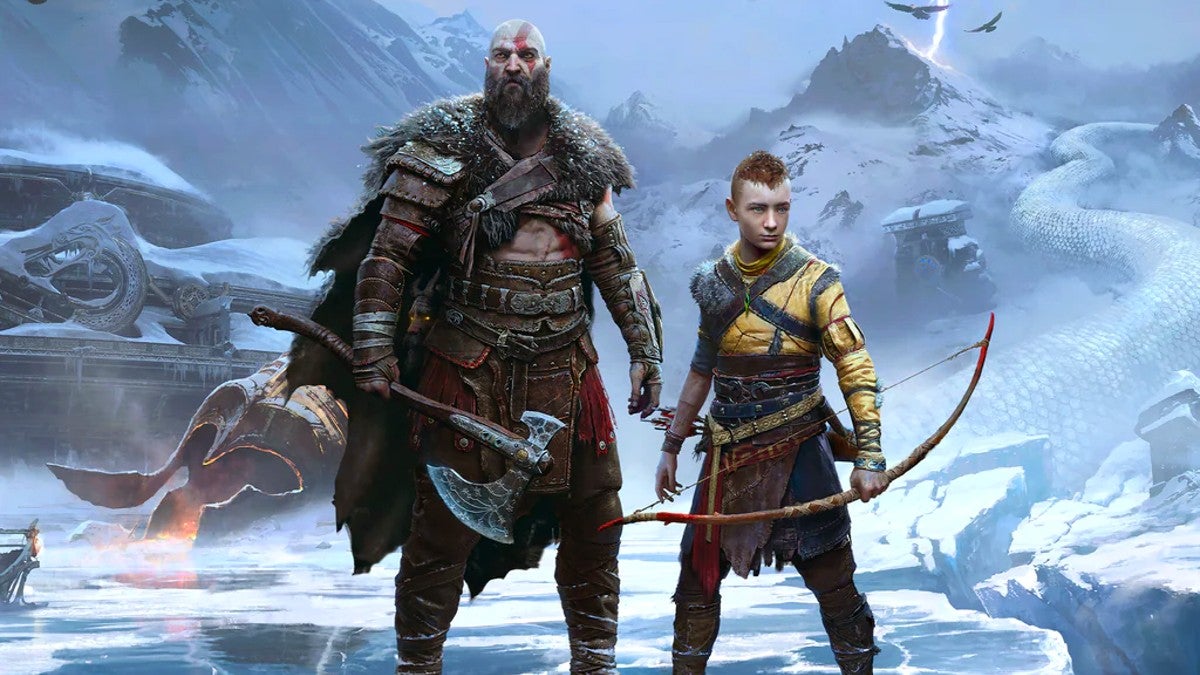
Three years after the beginning of Fimbulwinter, Kratos and Atreus are still dealing with the effects of the coming Ragnarök. With the end of the world approaching, things in Midgard are getting more and more dangerous, including attacks by a vengeful Freya. Although they don’t want to, Kratos and Atreus are forced to fight against the Norse gods.
Warning: the following contains spoilers for God of War Ragnarök.
Release Information
God of War Ragnarök was internationally released on both the PlayStation 4 and PlayStation 5 on November 9th, 2022. This title is currently the most recent addition to the God of War timeline.
Emotions Running Wild
The game opens with Kratos and Atreus fending off an attack by Freya as they return home from a hunt. Once they do, Atreus mourns the loss of one of his wolves, Fenrir. As the wolf dies in his arms, Atreus says a funeral prayer, which is also a spell that embeds Fenrir’s soul into Atreus’ knife.
Atreus wishes for some time to himself, which Kratos allows. Kratos then gets some rest, though, when he awakens, he cannot find Atreus. Worried, Kratos and Mimir look for Atreus and come across a huge and aggressive bear. After defeating the bear, it turns into Atreus, who apparently can shapeshift. This time, it seems that Atreus lost control of his emotions and accidentally turned into a bear.
After calming Atreus down, Kratos and Atreus turn in for the night in their home. Though, they are awoken by Thor and Odin coming to their house. Odin offers a deal to Kratos that involves no one getting hurt. However, Kratos refuses the deal, as he senses trickery and does not trust Odin.
When Odin hears Kratos decline, he commands Thor to attack. Kratos and Thor engage in an epic fight that ends once Kratos wounds Thor. This wound pays some sort of blood debt, which makes Thor back off.
The Search for Tyr
After Kratos and Thor’s fight, the Huldra Brothers (Brok and Sindri) find Kratos and Atreus. The dwarves learn what has happened and mention that Kratos’ home is no longer safe. Brok and Sindri then invite Kratos, Atreus, and Mimir to stay with them at their home in the realm between realms.
It turns out that Atreus—with Sindri’s help—has been secretly researching lore about the Nine Realms. This leads to Atreus coming up with a plan to seek out Tyr, the Norse god of war, who is apparently imprisoned in Svartalfheim.
Brok and Sindri set up a new way to travel realms via Mystic Gateways. This lets Kratos, Atreus, and Mimir travel to Svartalfheim, the realm of the dwarves. Eventually, the trio makes it to the Jarnsmida Pitmines, where they find a chained-up Tyr.
Kratos frees Tyr and convinces him to join their party. Together, they all return to Brok and Sindri’s house, although Tyr acts only as a source of information instead of a battle companion.
Atreus and Sindri’s Secret Adventure
After Tyr reveals himself to be of no help in averting Ragnarök, Atreus and Sindri sneak out to find more allies and answers. On their excursion, they meet Jörmungandr, who Atreus asks for advice on how to avoid Ragnarök. The world serpent only replies with one word: “Ironwood”, which does not help.
Next, Atreus tries to talk with Freya and smooth things over with her. However, she does not take it well and threatens Atreus. She tells him never to talk to her again but lets Atreus go unharmed.
At the end of their mostly-failed quest, Atreus and Sindri confide in each other that they must both eventually come clean about their secrets. Atreus says that he will one day share everything with his dad and Sindri states that he will one day tell Brok that he once had to resurrect him from the dead.
Learning the Truth About Ragnarök
The next part of the God of War timeline involves Kratos, Atreus, Mimir, and Tyr exploring Alfheim in search of more answers. After doing battle with some Light Elves, the party comes across another Jötunn Shrine.
Within, they learn that the Ragnarök prophecy they know is not the whole truth. It turns out that the frost giant Groa, who created the prophecy, lied to Odin about it many years ago. She told Odin that Ragnarök would end the entire world, however, it actually is only meant to destroy Asgard.
It is also revealed that there is meant to be a champion who will lead all the Nine Realms against Asgard. The information all points to Atreus being this champion, which Tyr tries to enforce. Atreus seems happy with the idea but Kratos is not; he doesn’t want his son to go to war.
Atreus in Jötunheim
When the party returns home, Atreus goes to bed but wakes up in Jötunheim. He meets Angrboda, who is one of the last frost giants. She tells Atreus more about prophecies. Together, they learn more about magic and the fate of the frost giants.
Atreus inserts the soul of a frost giant, held in a small marble, into the soulless body of a snake. This serpent later grows into Jörmungandr, who somehow travels back in time. Once more, time gets a bit convoluted in the God of War timeline.
Together, Atreus and Angrboda meet Gryla, who is Angrboda’s grandmother. Gryla, mad at the loss of most of her kind, has begun sucking the souls out of animals. Atreus and Angrboda work together to break Gryla’s magical cauldron, which stops her from consuming souls. Afterward, Angrboda helps Atreus get back home.
Kratos in Vanaheim
However, Atreus ends up in his home in Midgard, not Brok and Sindri’s house. Though, it is not long before Kratos finds him thanks to the nearby Mystic Gateway. Before they can argue, they are attacked by Freya.
The fight comes to a standstill, during which the two sides reason with each other. Albeit grudgingly, Freya requests Kratos’ aid in freeing herself from Odin’s binding spell, which stops her from being truly free. Kratos grounds Atreus when they get back to Brok and Sindri’s house. Afterward, Kratos and Brok accompany Freya to Vanaheim.
After meeting up with Freya’s brother, Freyr, and Brok’s dwarven friend, Lúnda, Kratos and Freya seek out the source of Odin’s curse. Together, they break the spell binding Freya. This leads Freya to forgive Kratos for killing Baldur and allows her to move on.
Atreus Goes to Asgard
Kratos, Freya, and Brok return to their home in the realm between realms. While planning their next move against Odin, Atreus volunteers to go to Asgard to spy on the Aesir gods. During Kratos and Thor’s fight, Odin invited Atreus to Asgard as an ally. Initially, Atreus refused, but now he explains to Kratos and the others that he can use this to spy on the Aesir.
Everyone says this is a bad idea but Atreus does not listen. He runs away and ends up in Midgard, where he eventually meets one of Odin’s ravens. Shortly afterward, Atreus gets transported to Asgard through Odin’s will.
Here, Atreus meets a few of the Aesir gods, including Heimdall, who wants Atreus dead but holds back his wrath at Odin’s command. Together, Odin and Atreus begin researching a mysterious and broken wooden mask that Odin believes will lead him to the source of all knowledge.
Odin then sends Atreus and Thor to Muspelheim, where Atreus finds another part of the wooden mask. Thrilled by Atreus’ success, Odin then sends Atreus and Thrud to Helheim to seek out the final piece of the mask.
However, things don’t go well as they don’t find the last piece of the mask and they end up freeing Garm, who is a giant wolf that can tear holes in reality. Atreus, guilty that he has failed, asks Odin to leave Asgard, which Odin agrees to.
Subduing Garm and Rescuing Freyr
While Atreus was seeking out pieces of the mask, Kratos visits the Nornr with Freya and Mimir. This is yet another time when Kratos meets Fate in the God of War timeline.
The Norse Fates tell Kratos many things but the most important part that he takes away is that Heimdall may kill Atreus. Kratos seeks out a way to kill Heimdall, which leads him to create the Draupnir Spear with the help of Brok and Sindri.
Short after the creation of the Draupnir Spear, Atreus returns to Brok and Sindri’s house, albeit amongst many realm tears. Everyone works together to close the realm tears, though everyone except Kratos yells at Atreus for what he’s done in freeing Garm.
In order to right this wrong, Kratos and Atreus head to Helheim to find Garm. Eventually, they defeat the immortal beast by inserting Fenrir’s soul into Garm’s body.
Afterward, Kratos and Atreus head to Vanaheim to help Freya and Freyr. When they get there, it’s revealed that Freyr was kidnapped by Einherjar led by Heimdall. While most of the heroes save Freyr, Kratos fights and kills Heimdall. Afterward, Kratos takes the Gjallarhorn from Heimdall’s corpse, which is the horn that will begin Ragnarök when blown.
Completion of the Mask
The group returns to the realm between realms to contemplate their next move. Atreus offers to go back to Asgard to do more spying. While most protest this, Kratos backs up his son, which leads everyone else into agreeing.
Atreus meets up with Odin in Asgard and they discover that the final mask shard is in Niflheim. Odin sends Atreus and Thor to the coldest realm, where they find the last piece of the mask and it becomes whole.
However, in a fit of rage, Thor attacks Atreus. Thankfully, the young hero is able to escape back to Brok and Sindri’s house with the mask. After some discussion, Tyr offers to lead them all into Asgard for a final confrontation with Odin.
This seems suspicious to Brok, who begins interrogating Tyr. The latter gets angry and stabs Brok before revealing himself to be Odin the entire time. Odin tries to take the mask but is forced to retreat before he can do so. Brok dies from his injuries, which depresses everyone greatly. This is also arguably one of the saddest moments in the God of War timeline.
Ragnarök Comes
After some time to cope with Brok’s death, the heroes find the final piece to their plans. Kratos and Atreus head to Muspelheim and find Surtr the fire giant. He is meant to join with his lover Sinmara and become the being known as Ragnarök. However, Surtr refuses to fulfill the prophecy the normal way, as it will result in Sinmara and him both dying.
Surtr comes up with an alternate plan that only involves him sacrificing himself to become Ragnarök. Kratos and Atreus manage to follow this plan and create Ragnarök before returning to their other allies. While Kratos was in Muspelheim, the other heroes were uniting the realms and gathering their forces to assault Asgard.
Now that all the pieces are in place, Kratos and Freya lead their army against Asgard in a climactic battle. Kratos uses the Gjallarhorn to summon Ragnarök, and, in the process, much of Asgard gets destroyed. When Kratos reaches the Great Lodge at the center of the realm, he fights Thor once more. Kratos defeats Thor but refuses to kill him.
After the fight, Odin shows up and commands Thor to keep fighting. Thor refuses, as he now believes what Kratos and Atreus are doing to be the right course of action. Angry, Odin kills Thor and then fights Kratos. This marks yet another moment in the God of War timeline where a patriarch god kills their son.
Kratos then fights and defeats Odin in battle. As the heroes are deciding what to do with Odin, who they trapped in a Jötunn marble, Sindri appears and shatters the marble, which kills Odin.
The End…for Now
After the fighting, Ragnarök continues to destroy Asgard. This forces the heroes to leave in haste, however, Freyr sacrifices himself so that the others can escape. Fenrir shows up and tears a hole in the fabric of reality so that almost everyone can leave before Asgard gets fully destroyed.
The group returns to Midgard, where they can process all that has happened. After tying up some loose ends, Kratos and Atreus find another Jötunn Shrine. This one is about Faye and the future beyond Ragnarök.
Afterward, Atreus tells Kratos that he wants to set out to find the remaining frost giants so that he can help them. Kratos sadly accepts, which is followed by Atreus, Angrboda, and Fenrir leaving together on their new quest. This is the first time in the God of War timeline that Atreus leaves Kratos’ side indefinitely.
When Atreus departs, Kratos finds that there is another shrine on the back of Faye’s Shrine—and it is one about him. Kratos’ Shrine implies that he will go on to be the new Allfather of the Nine Realms in Odin’s place and that his rule will be benevolent. With this strengthening his resolve, Kratos sets off with Freya and Mimir to begin rebuilding the realms.


